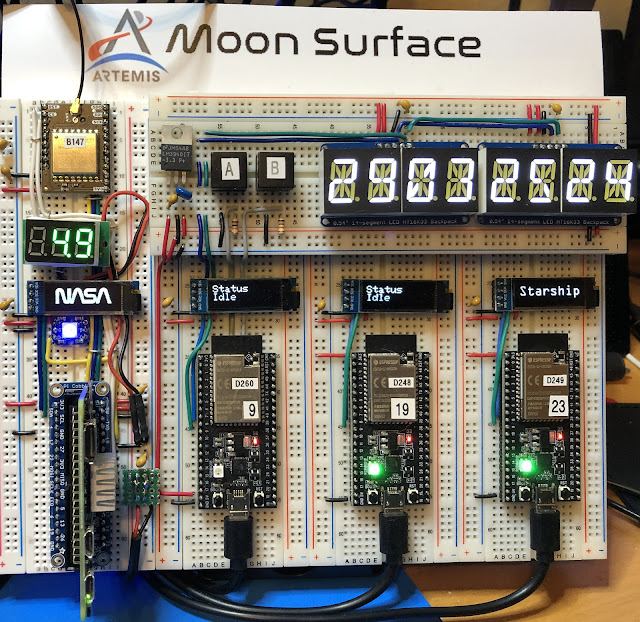One of the segments I have on my IPN DTN Lab prototype includes various simulated devices that are on the Moon Surface.
On the left I have a Raspberry Pi Zero W2 running RaspiOS and JPL's ION 4.1.1, and it is connected to the module on top of the breadboard that is a low power LoRa transceiver, for now sending simple text messages to the DSN node via LoRA.
So for more fun I started searching what is out there that I can use as a nicer Lunar Base? I started from scratch some ideas until I stumbled on this Lego kit.
I'm not much interested in the "toyish" parts, and I will need some extra space on the base to put the Raspberry Pi, Power Supply, LoRa, may be some lights, so how I can mod this ?
I downloaded this great tool for Lego design, Studio 2.0 from bricklink. This program is sort of a CAD tool to create designs with Lego blocks, not only you have a very nice GUI, you can also generate parts list, building instructions, render an animated video and get a list of parts with prices !!
It does not take much time to learn how to navigate and put together a project, I also found that you can import the parts list from the original Lego set, which are the parts you see spread out on the building plate. Just the four translucid cupola parts are missing.
So following the build instructions from the original kit, I started putting together the main piece for the Lunar Base, which is the one I want to modify and build.
Here is where I'm in the process, there are still some changes I want to do but getting very close to a preliminary version. Using this tool is great because I can get measurements and see where to fit other elements like the Raspberry Pi and change the model as needed without have to put any real Lego blocks together.
Hopefully on my next article about this I'll show the final product in action, including blinking lights !!
Cheers
Jorge





